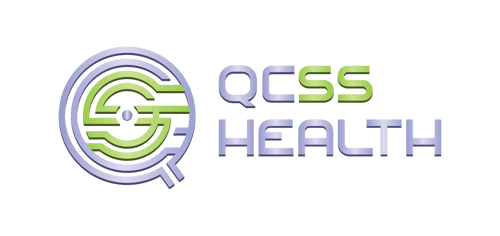In the ever-changing landscape of Managed Long-Term Services and Supports (MLTSS) organizations, a critical challenge lies in bridging the divide between finance, clinical operations, and technology. This divide extends beyond mere technological solutions; it calls for an alignment of people, processes, and culture that results in transformative change and superior outcomes. In this blog, we'll delve into strategies that allow for this alignment and offer new insights into the impact of digital disruption on organizational and managerial aspects.
The Disconnect: A People-Centric Perspective:
In MLTSS organizations, finance and clinical operations teams often operate with different priorities and perspectives. The finance team focuses on budgets, costs, and revenues, while clinical operations prioritize the quality of care and patient outcomes. This dichotomy can create a disconnect that hinders collaboration and the ability to meet shared goals and objectives.
The current state of technology in many MLTSS organizations is primarily geared towards supporting care management. While this is helpful for clinical operations, it creates challenges for finance departments, which may lack real-time access to pivotal financial data, thus hindering timely, informed decision-making. It's not just about implementing new technology for efficiency but about rethinking how you conduct business holistically, both within and outside your organization.
Digital Disruption: Understanding the Gap and Navigating the Challenge:
The healthcare sector is facing digital disruption, demanding effective responses from organizations. However, many grapple with the "knowing-doing gap," where recognizing the need for change doesn't translate to action. To navigate this disruption, prioritizing people is essential, emphasizing organizational and managerial initiatives alongside technology.
In this digital shift, leadership is pivotal—crafting a vision that unifies finance and clinical teams, fostering digital growth. Digital leadership means more than tech skills; it's adaptability, innovation, and driving change. The challenge lies in addressing the gap: while 87% of CEOs see digital disruption, only 44% feel prepared*. Bridging this is crucial for navigating the swift digital landscape.
Moreover, digital disruption centers on people. Success hinges on how individuals, organizations, and policies respond to technology's pace. While tech matters, focusing on a people-first approach is vital for thriving in this dynamic digital era.
The role of Technology as a Catalyst for Change:
Technology is both a challenge and a solution in this era of rapid digital transformation. It's about adopting a technology system that addresses the financial management and care management aspects of MLTSS equitably. A system that offers real-time financial data tracking, analytical capabilities, and seamless integration with healthcare systems for clinical management.
Making technology work requires getting everyone on board, with the culture and tasks in sync. This harmony, called organizational congruence, is crucial for performing the best in today's digital world. When everyone embraces technology and works well together, the organization can overcome challenges, grab opportunities, and stay ahead. This means adapting, collaborating, and innovating, all within a culture that values what technology brings.
By using technology smartly, you’re not just keeping up – you’re taking the lead. You get to be the game-changers, staying ahead of the industry. Tech lets you do things faster, adapt more quickly, and better serve your customers. Those who don't catch on risk getting left behind.
Strategies for Success: A People-First Approach:
Implement a Unified Technology Platform:
To bridge the divide, MLTSS organizations need a robust technology platform that addresses the specific needs of both finance and clinical operations, offering real-time financial data tracking, analytical capabilities, and seamless integration with healthcare systems.
Leverage Data-Driven Decision Making:
Using real-time data analytics can play a crucial role in bridging the gap between the financial and clinical operations teams. Accurate and timely data can illuminate opportunities for cost savings and highlight areas for clinical improvement, leading to improved efficiency and patient outcomes. Let data guide decisions and align both teams towards common goals.
Use Software to Cultivate Collaboration:
Establishing a foundation of collaboration is essential for the success of any organization. However, the absence of transparency and mutual understanding can hinder efficient teamwork across different departments. This is where software tools come into play, effectively bridging the gap between clinical operations and finance. By providing real-time insights, preemptive problem-solving, shared visibility, and alignment of goals, these tools foster a more integrated working relationship across teams.
Organizing for Agility:
Organizational agility is critical in the face of digital disruption. MLTSS organizations must be able to adapt swiftly to a changing market environment driven by new technological developments. To achieve this, cross-functional teams can provide strategic advantages by acting quickly, addressing multiple initiatives simultaneously, and encouraging diverse thinking.
Embrace the Unified Approach: Empower Your MLTSS Organization:
Success in the digital era hinges on a unified approach that aligns finance, clinical operations, and technology. This alignment entails embracing new technology and nurturing organizational culture. By integrating finance and clinical operations through a technology platform that offers real-time data access and collaboration, MLTSS organizations can better achieve digital transformations.
Looking ahead to the future of work, the focus shifts to technology augmentation. This shift liberates professionals from manual and administrative tasks, enabling them to assume more value-added roles. This transition doesn't reduce the need for clinicians, but rather re-focuses how their time is spent, allowing them to spend more time doing what they love – delivering great patient care.
The future of MLTSS organizations rests with those who value collaboration and technology. Breaking down silos, fostering teamwork, and prioritizing member health outcomes lead to both superior financial performance and exceptional patient care. Are you prepared to embark on this transformative journey and shape your MLTSS organization's future? Reach out to the QCSS Health Team to learn more!

